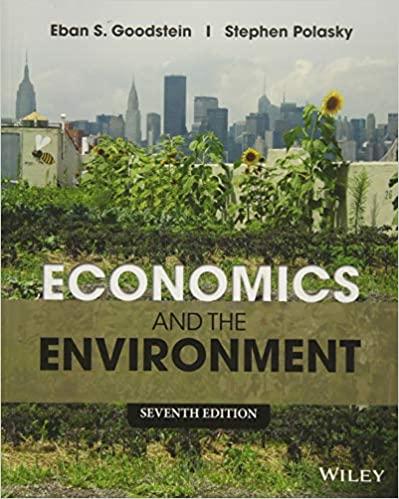As noted in this chapter, one of the Clean Air Act Amendments passed by the U.S. government
Question:
As noted in this chapter, one of the Clean Air Act Amendments passed by the U.S.
government in 1990 was designed to control the emission of hazardous air pollutants.
The EPA released a publication that year, estimating that at 149 industrial facilities nationwide, cancer risks to the most exposed local residents from airborne toxics were greater than 1 in 10,000; at 45 plants, risks were greater than 1 in 1,000.
The air toxics law required firms to impose control technology that, it was hoped, would reduce risks to below the 1 in 10,000 level. After the control technologies are installed, a follow-up risk analysis will be conducted to see if further control is necessary to further reduce any unsafe exposure. While the legislation did not require risk reduction to the 1 in 1 million level, that remains the long-run target.
1. Clearly, air toxics control is justified on safety grounds. Suppose that total benefits of the legislation just matched total costs, at $5 billion annually.
Would air toxics control be justified on efficiency grounds?
2. Also as noted, one economist in fact criticized the legislation from an efficiency perspective. He put estimated total costs at $6 to $10 billion per year and total benefits at $0 to $4 billion per year (Portney 1987). The air toxics legislation attacks some fairly significant risks. How can the estimated benefits be so low (as low as zero)?
3. Suppose the air toxics regulations raised household expenditures on gasoline (due to extra controls on oil refineries) by an average of $20 per year. If millionaire Mary and janitor Jane each paid the extra $20, in what sense is the impact of the legislation regressive?
Step by Step Answer:

Economics And The Environment
ISBN: 9781118539729
7th Edition
Authors: Eban S. Goodstein, Stephen Polasky





